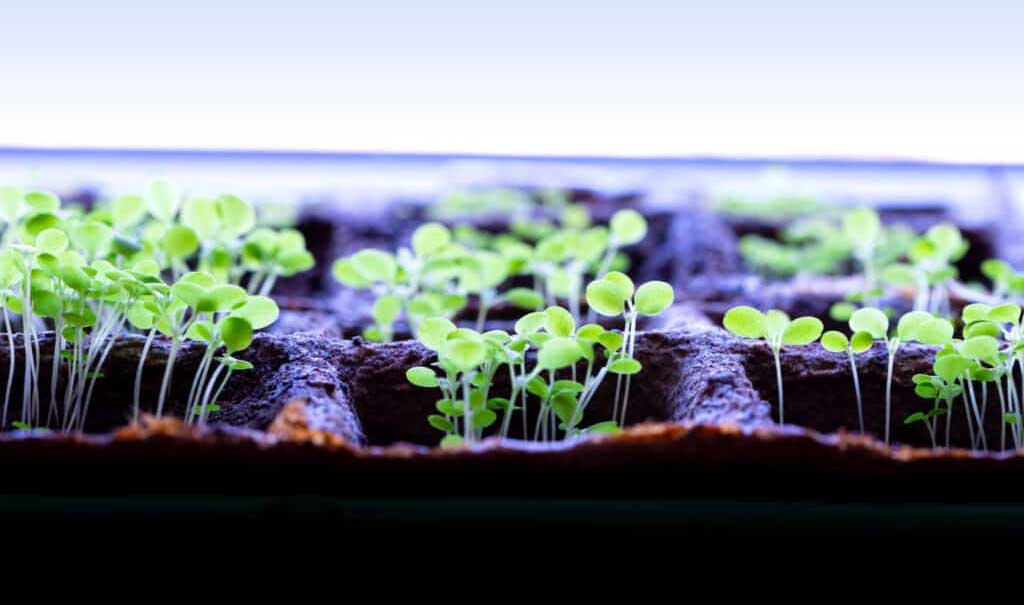When you are considering getting into growing, whether you are cultivating cannabis, tomatoes, or something else, one of the biggest decisions – and investments – you’ll make is what LED grow lights to buy. So, what’s the best way to research LED grow lights?
Knowing where to start the search for the best LED grow lights isn’t simple. And unless you are both a grower and a lighting engineer, it can seem overwhelming. Add in unscrupulous manufacturers who make misleading claims, and it can feel like making the right decision is impossible.
And let’s not forget that LED grow lights are a substantial cost, so you want to make sure to get the best lights that will stand the test of time.
However, there are ways to research LED grow lights and choose the best one for your operation without losing your mind. And if you do your due diligence before investing thousands of dollars in a system, you’ll reap the rewards for years to come.
So, how do you begin the process of researching LED grow lights and create a successful horticultural environment? Things can get complicated – and technical – quickly, so we devised a roadmap to get you started. Here is where to begin.
Where to start
Assuming you know what crops you are planning to grow and where you are planning to grow them, you can start the research process by understanding a few technical terms. Now, here is where it can get really overwhelming really fast and most people get frustrated by how much information is out there. We understand – it is a lot and none of it is familiar!
If you are growing indoors, you’ll need lights that allow you to best simulate the sun. Plants that flower need different light cycles, for example, than plants that don’t bear fruit (or bud).
This is where LED grow lights can really impact your business, because they allow more control over the color, intensity and temperature of the light – and generally, plants respond better.
When you are considering an LED grow light, you have likely already made the decision to grow your plant a certain way. You’ve probably decided against old-fashioned HPS or HID lights, that are limited in the spectrum they put out and also tend to run hot temperature wise, meaning you need to do more to control the environment in your facility.
So, what makes one LED grow light superior to another LED grow light? To research LED grow lights, you’ll need to know a few things:
- Thermal management, or heat sink technology: We have a blog that explains this, but the No. 1 thing growers need to consider when buying LED grow lights is thermal management or heat sink technology. Your lights will damage your plants and fail faster if the heat isn’t taken off them – and fast. That’s just science.
- Spectrum and intensity: Some LED lights mimic the sun better than others, so knowing that, you can choose the best one based on the spectrum you need and the intensity you want. The challenge for the cultivator is to determine which manufacturer of grow lights will provide the optimal light spectrum and light intensity to maximize profits.

Questions buyers need to ask themselves
Before you start the research process, as a buyer of LED grow lights, you’ll need to ask yourself some questions. These factors will impact the kind of lights you need and it’s best not to ask another grower, as what works for someone else might not work for you.
Here’s what you need to ask yourself:
- What am I growing? Different plants need different types of light. So, you’ll need to find the kind that fits what you hope to grow. We already talked a little bit about flowering plants, and how their needs are different from something like lettuce.
- What size space are you in? Depending on the size of your space, you will need different types of lights. LED grow lights come in different shapes, sizes, types, spectrums and wattages and knowing the space of your facility – including ceiling height – is critical.
- What is your budget? LED grow lights can be a hefty initial investment, there’s just no getting around that. And that’s why it can be tempting to go with a cheaper design. But buying from a reputable, established company is usually best because you truly do get what you pay for!
Reduce the noise
Narrowing your choices down to only a few manufacturers is difficult because it seems every day a new brand pops up in the marketplace. Local utilities rely on the Design Lights consortium (DLC) and you should too. They are an excellent place to review different LED grow lights without a brand’s marketing obscuring reality.

Before a manufacturer or brand can be placed on the DLC Qualified Products List (QPL) they are required to meet a stringent number of performance criteria. This QPL can be found at https://qpl.designlights.org/horticulture. Easily sort by brand, manufacturer, features and even by state compliance for Illinois and Massachusetts.
It’s also a good idea to check in with other growers to discover what their experiences with different grow lights and manufacturers have been like. Not plugged in to your local grower’s network? That’s not a problem – growers freely discuss the good, the bad and the ugly when it comes to their grows and the tools they use on social media, particularly Instagram. Many have conducted side-by-side tests with two or more manufacturers’ LED grow lights as well. Even bad experiences can be helpful because you can learn how the manufacturer resolved the issue (or didn’t) so be sure to ask.
Questions buyers need ask the reseller/retailer/manufacturer
Once you’ve narrowed it down to a few brands or manufacturers, you will probably have a few specific questions to ask about their LED grow lights. Here are a few things to consider asking – and making note of.
- How are your lights certified? There are many ways LED grow lights can be certified, but there are a few you’ll want to see before making a purchase. The Design Lights Consortium is a voluntary certification program that assures buyers that the lights have been tested by an independent and accredited third party in these areas: Micromole levels, efficacy, longevity, spectrum accuracy, voltages and operating temperature. So, why DLC Certification important? Many utility companies nationwide look for this certification to decide whether to grant rebates to companies who use certified products – like LED grow lights.
There are also safety certifications to consider from labs like ETL and UL.
- Warranty: This might go without saying, but making sure your LED grow lights have a robust warranty is crucial when making a large financial investment. The cheaper lights don’t always come with that backing, so make sure you understand why.
Test Grows
Testing is the next step for growers and nothing is better than conducting your own test grow. When that’s not possible, be sure to request supporting documentation from the manufacturers if you haven’t already done so. Computer simulations of your grow are an excellent option and most manufacturers offer this as a free service.

The Key Takeaway
Know what and how you ant to grow before determining which manufacturer or brand of LED grow lighting to purchase. Reduce the number options by learning more about other growers’ customer experiences and utilizing the DLC Qualified Products List. Quality research is worth the time for the investment you are making in your grow.


